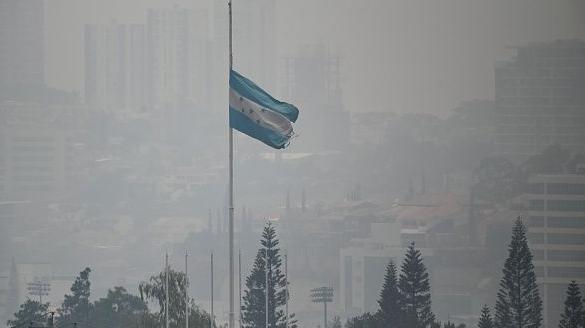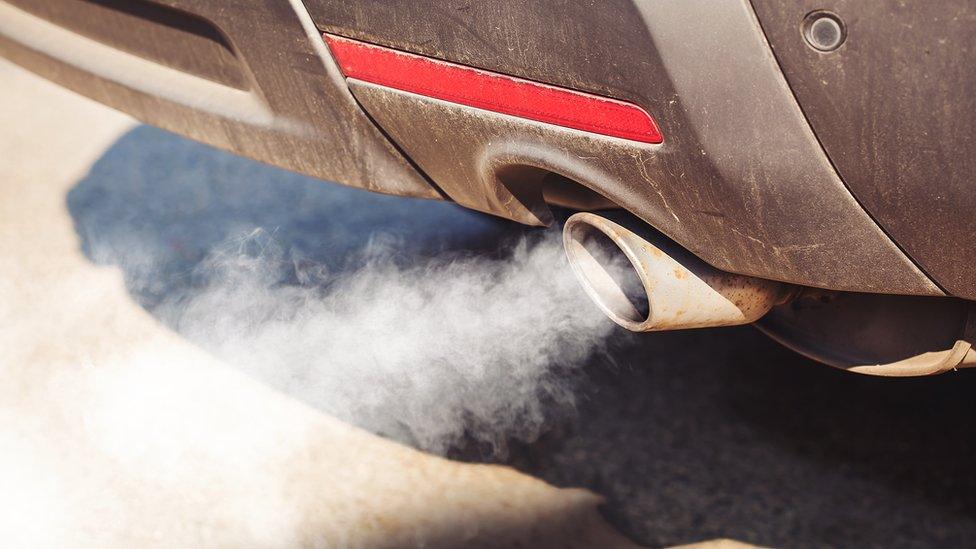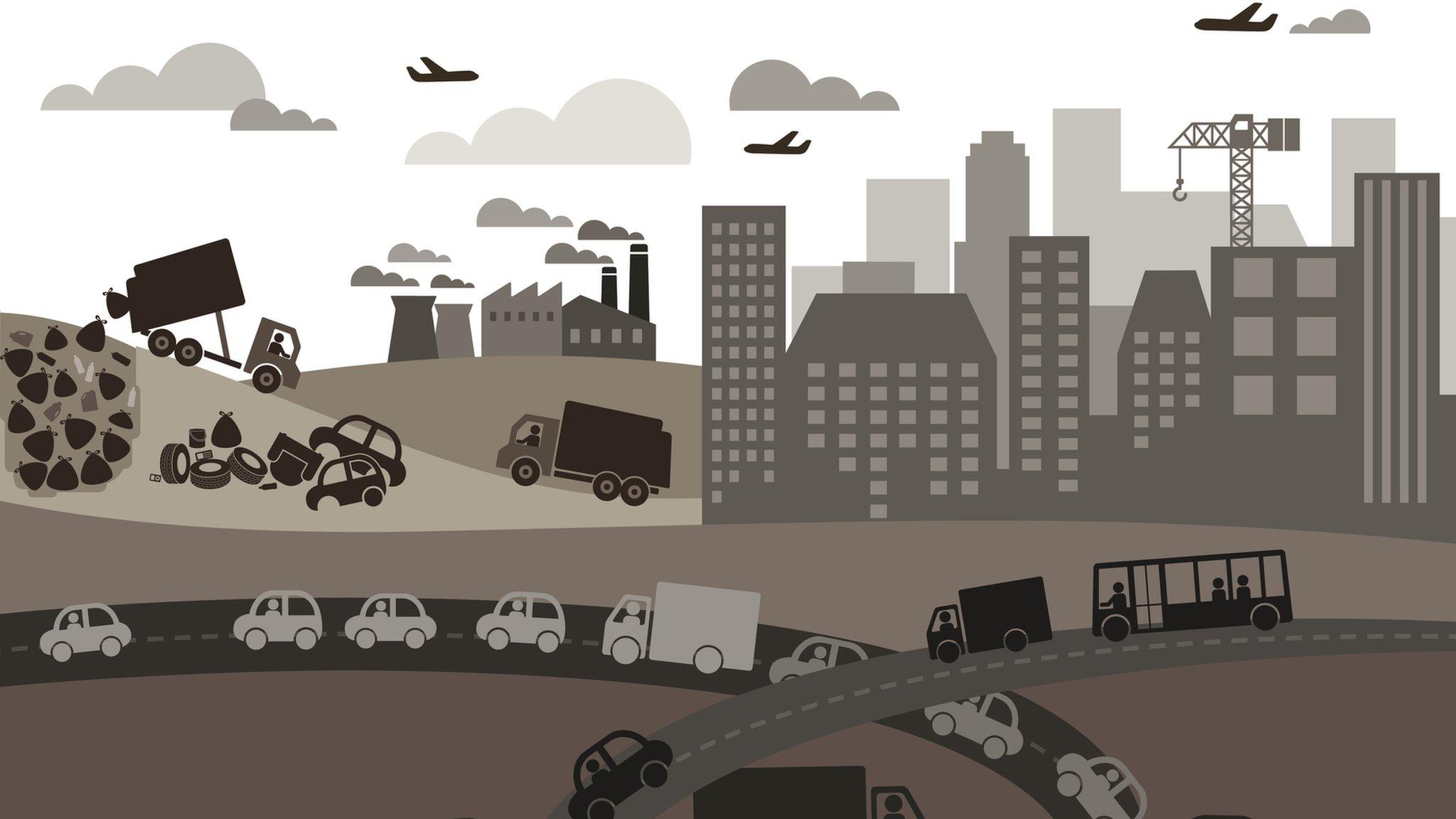Air pollution in Honduran city is 50 times higher than guidelines

Many Honduran cities face pollution problems
- Published
Air quality in San Pedro Sula, the second-largest city in Honduras, is the most polluted on the American continent.
The air quality in the Central American city is so bad that it's almost 50 times higher that the World Health Organisation (WHO) guidelines.
The pollution is caused by forest fires and weather conditions, which have been made worse by El Niño and the climate crisis.
Authorities in Honduras have raised the threat level to its highest in most of the country, and have advised people to close windows and stay inside.
Read more about air pollution:
- Published30 April 2020
- Published7 November 2023
- Published16 June 2022

Several planes have had to be diverted to land in neighbouring countries due to the pollution
The air pollution has caused many problems in the city of San Pedro Sula, including:
Schools having to temporarily close
An increase in people visiting doctors with breathing problems
And several planes have been unable to land and have been diverted to another country
Dr Cristobal Bustamante, the national director of the emergency medical unit of the Honduran Permanent Contingency Commission, said: "We have seen a steep increase in respiratory emergencies, especially within vulnerable populations."

Increased temperatures in Honduras have led to more forest fires
The air pollution is caused by spikes in temperature due to the El Niño phenomenon.
El Niño increases temperatures and decreases rainfall, which leads to droughts.
The dry climate and intense heat also lead to wildfires, which Honduras has experienced.
The contamination is also linked to the gradual effects of climate change.
- Published10 March 2021

- Published19 April 2021

- Published7 February 2019

